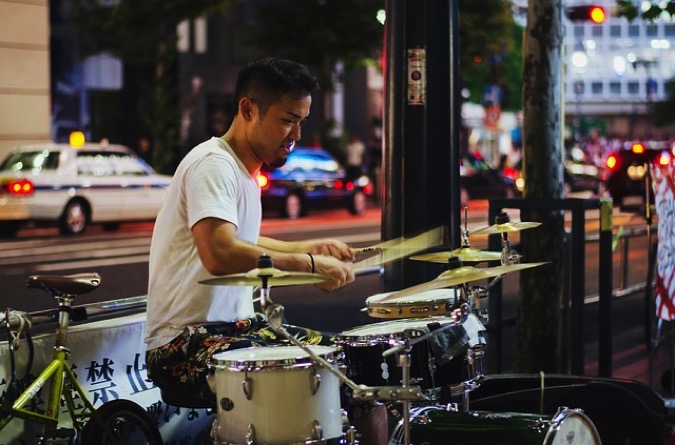Practicing and playing drums can be lively and fun. However, as much fun as practicing may be, there will always neighbors who will not appreciate you knocking out a measure of double flamadiddle sixes when you decide to work on your chops in the middle of the night.
This is why it is important to come up with a way to practice that ensure you are not annoying your neighbors or significant other. The following are some of the best ways to practice playing drums without making a racket:
Towels and Blankets
The most lo-fi way of reducing the sound of a drum kit is to simply throw some blankets or heavyweight towels on top of your acoustic kit.
The downside of this is that in order to get sufficient dampening, you will most likely need to use the thickest blankets and towels you can find. This could make the dampening too much to really be able to work on your technique.
Conversely, if you do not have a thick enough layer of padding, you will not get adequate dampening, and most everyone will hear you practice.

Use Drum Mute Pads
If you want to reduce the sound and still have some rebound action with your drumsticks, mute pads are a great option. They will make a substantial reduction in the sound when you practice whether it is at midnight or during the middle of the day.
Most brands have pads that come in specific sizes ideally fitted for snares, toms, bass drums, and cymbals. Check out the different types of mute pad brands to see if they fit the drum set that you’re playing. This might also be a time to consider investing in a high-quality drum set that is the best option for you and the mute pads of your choice.
Practice Pad Kit
Slightly more expensive is the choice of using a practice pad set. Practice pad kits typically consist of several drum pads mounted to a central shaft. There also will be a pad you can attach a bass drum pedal to along the bottom. This then attaches to a tripod.
Practice pad kits can be set up pretty much anywhere so that you can practice quietly without really bothering anyone. The main benefit of this type of kit is that they are not all that expensive. They are also fairly portable and they allow you to play quietly enough to not bother your neighbors. Plus, these pads have a more realistic feel than any of the previous options.
The negatives with this are that it can feel somewhat flimsy. If you are a drummer who plays really hard, there may be an issue of whether one of these sets will be able to withstand the constant berating.
The other issue with this type of practice kit is unlike mute pads, practice pad kits do not give you the ability to practice on a kit similar to your own. All this may not be all that big of an issue if you are working on basic rhythm patterns, rudiments, or bass techniques. However, it can become a large obstacle if you wish to practice playing around your personal setup, because you will not be able to recreate the precise setup that you use.
The Takeaway
Practicing is important, but it can cause people to complain about the sound. In order to remedy this issue, you will need to dampen your drum sounds. The ideal way is to combine a mixture of practice pads and mute pads so that you can reduce the sound while having some semblance of playing something similar to your personal set.







